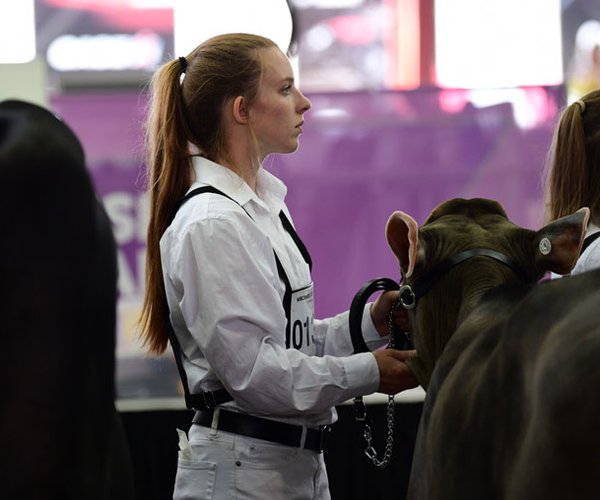The migratory birds are returning, the lakes, rivers, and fields are starting to thaw, and bits of green are popping up through what remains of winter. As I traverse the state in Tassie, I notice the signs of spring everywhere I go! Whether you’re raising animals, planting crops on hundreds of acres, growing specialty crops in greenhouses or fields, or gardening in the backyard, spring brings different changes.
As spring arrives, so do many of our baby farm animals! For grazing animals like sheep and goats, a spring birth means there’s plenty of fresh green plant growth for ewes and does to have a plentiful milk supply. Plus those plants will still be ready to be munched on when the lambs and kids are ready to begin browsing. Cattle are pretty impressive when determining the timing of giving birth. The Farmer’s Almanac shares “University of Arkansas scientists report that spring calves tend to be born when barometric (air) pressure is high.” High air pressure discourages rainfall, which means the calves usually have a few days to dry off and acclimate to their new world before facing springtime storms.
For large-scale crop farmers and backyard gardeners alike, one of the earliest steps in the spring is working on the soil. Once the ground has thawed, growers will use various techniques to help aerate the soil, address nutrient imbalances, tackle any early weed issues, and prepare the soil for a nice planting location. Aerating the soil through tilling, broad forking, or other methods to break up the particles helps ensure water and nutrients can get to the soon-to-be-planted plants.


Many specialty crop producers and home gardeners can get a jump on the season by starting some of their seeds indoors or in a greenhouse without the worry of an upcoming freeze. Celery, peppers, broccoli, tomatoes, squashes, pumpkins, melons, cucumbers, and more can all be started early and will transplant nicely once it’s warmer out. Your local University of Wisconsin Extension Office is often a wonderful resource!
Equipment maintenance is another key aspect of springtime preparations. After sitting through winter and sometimes even longer, equipment usually needs cleaned. Cobwebs, mouse nests, dust, and leaves all seem to find their way into nooks and crannies over winter. Testing the functionality of all the components of the equipment comes next, even down to the seed delivery mechanisms and spray nozzles. Just one malfunctioning part can cause many headaches down the line. Replacing filters, fluids, checking electrical components and tires, and greasing up parts that need to move can all help make spring planting easier and extend the life of equipment.
Springtime is known for being a period of rebirth, for the animals, for the plants, and sometimes for the farmers. After a cold winter, the longer days and the warmer temperatures help renew a sense of excitement for the upcoming season. The fences can be fixed. The water lines can be repaired. The snow finally melts away. And farmers are ready for another season of growth.
— Halei Heinzel is the 77th Alice in Dairyland, Wisconsin’s agriculture ambassador who works with media professionals to educate consumers about the importance of agriculture to Wisconsin’s economy and way of life. She can be reached at halei.heinzel@wisconsin.gov.





